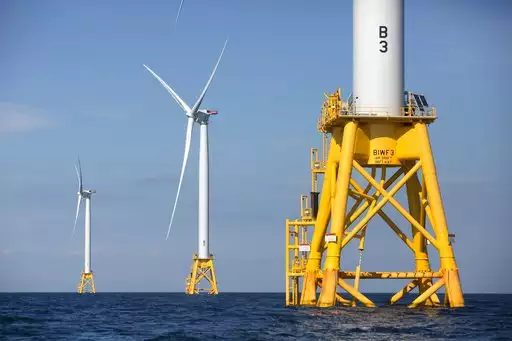The Indian government has taken a significant step towards enhancing its renewable energy portfolio by approving a Viability Gap Funding (VGF) scheme aimed at offshore wind energy projects. This move is designed to address the financial challenges associated with high initial investments and to stimulate the growth of the offshore wind sector in India.
Key Objectives:
The VGF scheme primarily aims to make offshore wind energy projects more financially viable, thereby encouraging private sector investment. Offshore wind energy, given its substantial potential along India’s vast coastline, is seen as a crucial element in diversifying the country’s energy mix and reducing its reliance on fossil fuels. By providing financial assistance, the government hopes to expedite project development and bring about a significant increase in the country’s renewable energy capacity.
Financial Structure:
The scheme involves a total expenditure of ₹7,453 crore. Out of this, ₹6,853 crore is allocated for the development of 1 gigawatt (GW) of offshore wind energy projects off the coasts of Gujarat and Tamil Nadu. The remaining ₹600 crore is dedicated to upgrading the necessary port infrastructure to support these projects.
Detailed Breakdown:
1- The ₹6,853 crore allocated for project development will cover costs associated with site identification, environmental impact assessments, installation of wind turbines, and other critical infrastructure.
2- The ₹600 crore set aside for port upgrades is intended to enhance the capacity of ports in Gujarat and Tamil Nadu, ensuring they can handle the logistics and transportation needs associated with large-scale offshore wind projects.
Expected Outcomes
1- One of the most significant benefits of the VGF scheme is its potential to reduce carbon emissions. Offshore wind energy is a clean, renewable source of power that can help India meet its climate goals and reduce its dependence on fossil fuels.
2- The scheme is expected to generate substantial economic benefits, including the creation of numerous job opportunities in the construction, operation, and maintenance of offshore wind farms. It will also stimulate investments in the renewable energy sector, both from domestic and international players.
3- By encouraging the development of offshore wind projects, the scheme is likely to drive technological innovation and improvements in efficiency. This can help bring down the costs of wind energy over time, making it more competitive with other forms of power generation.
4- The VGF scheme is a crucial component of India’s strategy to achieve its ambitious renewable energy targets. The country aims to reach 175 GW of renewable energy capacity by 2022 and 450 GW by 2030. Offshore wind energy will play a pivotal role in meeting these targets and ensuring a sustainable energy future.
The VGF scheme aligns with the National Offshore Wind Energy Policy introduced in 2015, which provides a framework for the development of offshore wind energy projects in India. This policy includes guidelines for resource assessment, project development, and regulatory support. The financial backing provided by the VGF scheme adds a critical economic incentive, making it easier for developers to undertake and complete these large-scale projects.
The approval of the VGF scheme for offshore wind energy projects marks a transformative step in India’s renewable energy journey. By addressing the financial barriers to entry, the scheme aims to unlock the vast potential of offshore wind energy, contributing to the nation’s energy security, environmental sustainability, and economic growth. Effective implementation and continued government support will be crucial to the success of this initiative, paving the way for India to become a global leader in offshore wind energy.

